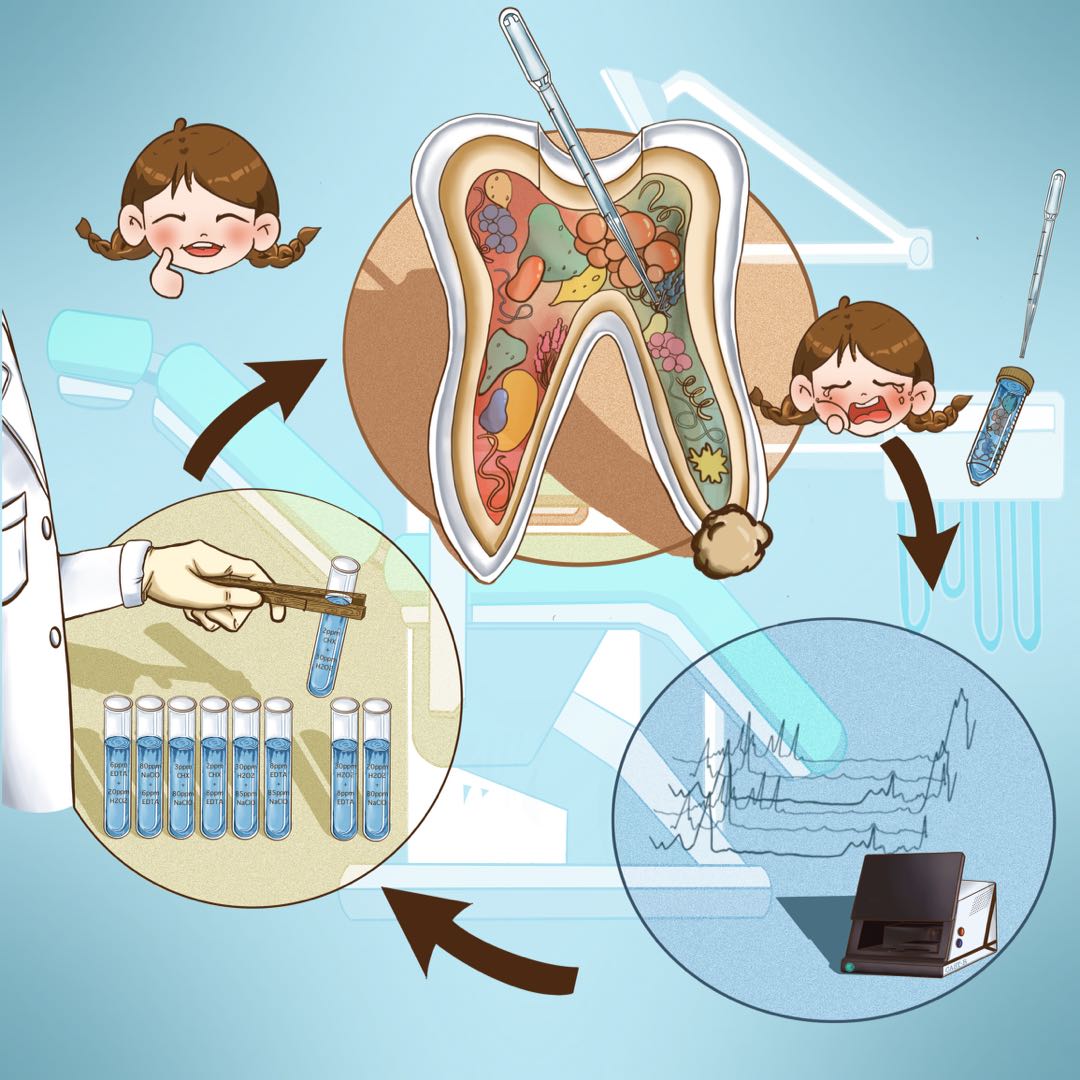A Chinese research team has devised a ramanome-based technique to catch pathogens that are still present and metabolically active in a tooth about to undergo root canal treatment even after they appear to have stopped growing.
The technique could limit re-infections while reducing the amount of disinfectant required, in turn dialling down the chance of side-effects.
The technique and its application to both bacterial infection and fungal infection are reported, by scientists from Qingdao Municipal Hospital, Qingdao University and Qingdao Institute of Bioenergy and Bioprocess Technology (QIBEBT), Chinese Academy of Sciences (CAS), across a pair of papers appearing in the Frontiers in Cellular and Infection Microbiology on February 23 and the Journal of Raman Spectroscopy on January 17.

Potential application of D2O-probed Single-Cell Raman Microspectroscopy in root-canal treatments.
(Image by LIU Yuhan and Yu Ningfu)
A common case of microbial infection in teeth occurs when as a result of tooth decay or damage, the pulpy mass of nerve tissue and blood vessels inside the tooth become home to the growth of pathogenic microbes. At this point, root canal surgery becomes necessary, which involves removal of the pulp tissue and a disinfection of the inside of the tooth with antibiotics.
The bacterium Enterococcus faecalis (E. faecalis) is frequently encountered in such dental infections. E. faecalishas become resistant to many antibiotics. When re-infections occur in the teeth, E. faecalis is typically the culprit, responsible for up to 90 percent of reinfection cases.
Meanwhile, Candida ablicans (C. ablicans) is a fungal species that poses a risk of oral infection more broadly than just the teeth.
In root-canal treatments, sodium hypochlorite (NaClO) and chlorhexidine gluconate (CHX) mouthwashes are used to disinfect the mouth from, and rid it of both E. faecalis and C. ablicans.
Although microbes stop multiplying at the ‘minimum inhibitory concentration’ (MIC) of an antibiotic disinfectant, this does not mean that they are not still metabolically active (i.e., still alive but not growing).
This "nongrowing but metabolically active" (NGMA) state, which can lead to recurring infections, is a real clinical challenge. "To fix this problem, the clinician needs to know not just whether the microbes are still growing, but also whether they are still metabolically active," said YANG Fang, Deputy Director of Stomatology Center at Qingdao Municipal Hospital and the senior author of both papers. "So, we devised a technique to allow such an assessment to happen."
They applied the ramanome approach, which is based on single-cell Raman spectroscopy (SCRS), to tackle the task, with the help of Clinical Antimicrobial Susceptibility Test Ramanometry (CAST-R), a novel instrument developed at Single-Cell Center, QIBEBT, CAS. This permits the identification of metabolic activities at a remarkable resolution of just one cell (of bacteria or fungus, or indeed any type of cell) rather than at the level of billions of them.
SCRS uses laser ‘tweezers’ to manipulate single cells, while the broader field of Raman spectroscopy enables identification of those molecules. After feeding the microbes with heavy water (D2O), SCRS can track the microbe’s uptake of D2O, which in turn can be used as a proxy for metabolic activity.
If even a tiny handful of microbes are still metabolizing, the technique can detect it.
Next, the researchers used the D2O-based SCRS technique to assess and compare metabolism inhibiting abilities of three antimicrobial agents: the aforementioned NaClO and CHX, as well as hydrogen peroxide (H2O2). They found that by doubling the MIC doses, they could achieve the more rigorous complete inhibition of their metabolic activity (MIC-MA).
Better yet, they found that if they combined two of the three options rather than just using one, a lower concentration of the disinfectants could suffice to elicit the same metabolism-inhibiting effect, which could reduce side effects.
Like the MIC dose, the MIC-MA dose is not intrinsic to the drug, but also depends on unique attributes of the infected person. Thus, moving forward, the researchers hope to develop their technique to be able to identify the relevant disinfectant level that is personalized to the patient.
Such lower need for the antimicrobial drugs to achieve the same effect could also reduce overuse of antibiotics, as no more is applied than necessary.